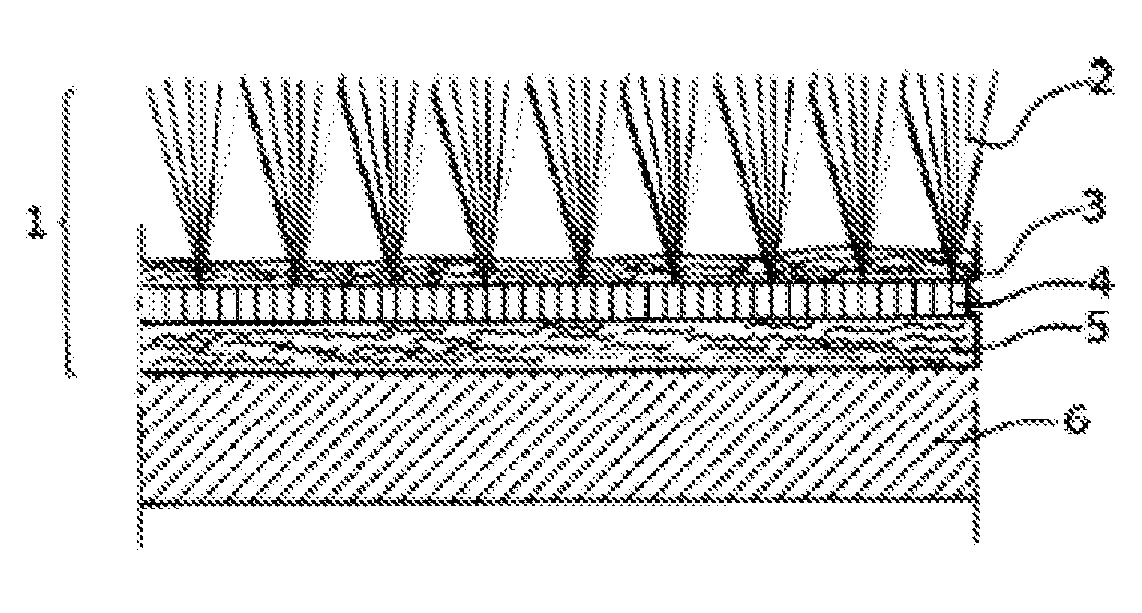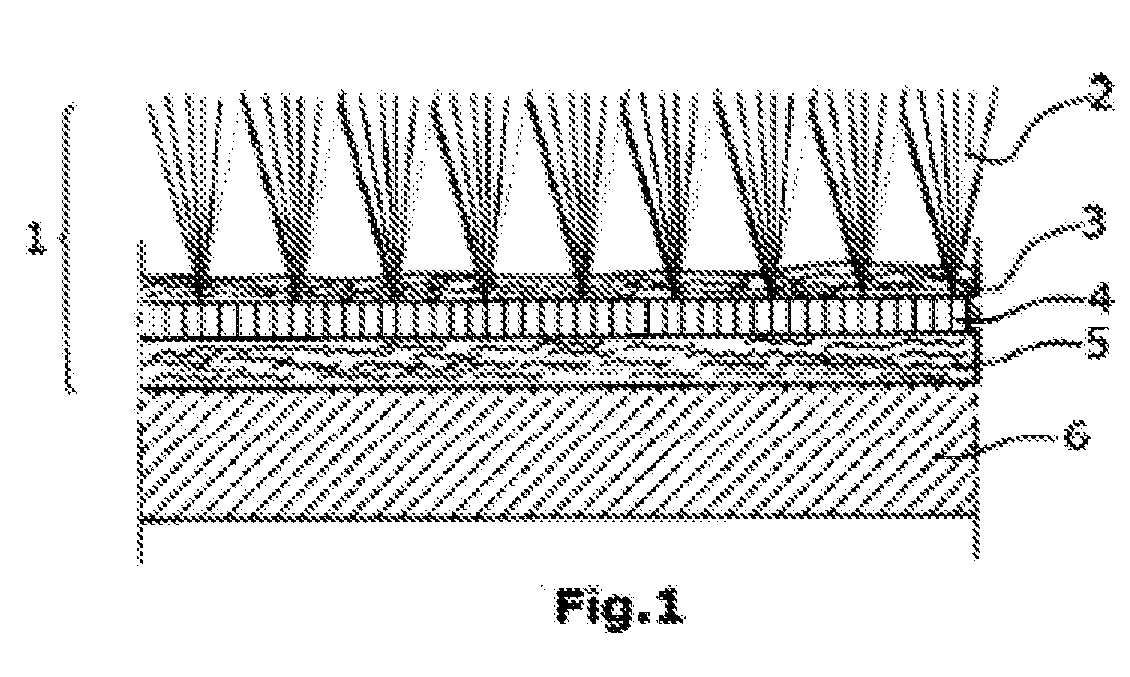Motor vehicle parts
- Summary
- Abstract
- Description
- Claims
- Application Information
AI Technical Summary
Benefits of technology
Problems solved by technology
Method used
Image
Examples
example 1
[0040]A tufting carpet 1 was produced with a PET / rPET yarn size 2 of 1020 dtex, 127 filaments and a partition of 5 / 64″ utilizing a 120 g / m2 PET / coPET support 3 with a pile yarn final weight (pile 2) of 305 g / m2. The bonding was effected by means of roller coating of 100 g / m2 of coPET dispersion 4; a 360 g / m2 PET / coPET non-woven 5 was laminated thereon to improve the absorption / stiffening performance. The forming of the composite into a motor vehicle floor covering was performed using a fully automatic thermoforming machine in the process steps of cutting the carpet and non-woven to length, laminating in a laminating hot press, followed by heating in an IR heating field, followed by forming. The test of abrasion as one of the quality characteristics yielded 0.180 g.
Test conditions by analogy with DIN 53 754according tocycles N1000PrA-014revolutions per minute n60rpmload F2 × 1000gabrasion wheel typeH18desired values:abrasion ≦0.3
example 2
[0041]Another tufting carpet 1 was produced with a PET / rPET yarn size 2 of 1300 dtex, 127 filaments and a partition of 1 / 10″ utilizing a 120 g / m2 PET / coPET support 3 with a pile yarn final weight of 305 g / m2. The bonding was effected by means of roller coating of 100 g / m2 of coPET dispersion 4; a 360 g / m2 PET / coPET non-woven 5 was laminated thereon to improve the absorption / stiffening performance. The forming was performed as in Example 1. The abrasion test yielded 0.210 g.
example 3
[0042]By a fiber flock process, corresponding PET / rPET fiber insulations 6 with a 15% PET / BiCo fiber proportion were produced.
[0043]Thus, the floor covering system (top fabric+insulation) consisted of a PET one material system. A complete reprocessing is possible. Thereby, and by the use of recycling PET (rPET) fibers, the requirements of “sustainability” and “green technology” are fully met.
PUM
| Property | Measurement | Unit |
|---|---|---|
| Melting point | aaaaa | aaaaa |
Abstract
Description
Claims
Application Information
 Login to View More
Login to View More - R&D
- Intellectual Property
- Life Sciences
- Materials
- Tech Scout
- Unparalleled Data Quality
- Higher Quality Content
- 60% Fewer Hallucinations
Browse by: Latest US Patents, China's latest patents, Technical Efficacy Thesaurus, Application Domain, Technology Topic, Popular Technical Reports.
© 2025 PatSnap. All rights reserved.Legal|Privacy policy|Modern Slavery Act Transparency Statement|Sitemap|About US| Contact US: help@patsnap.com


